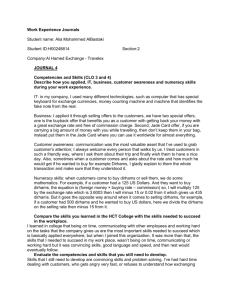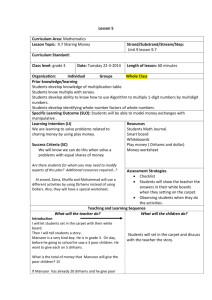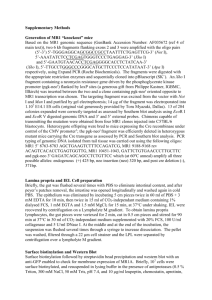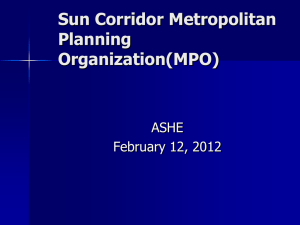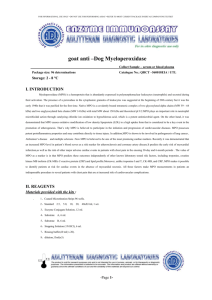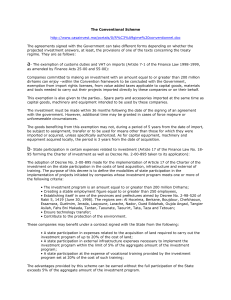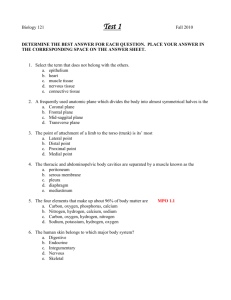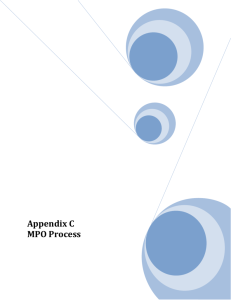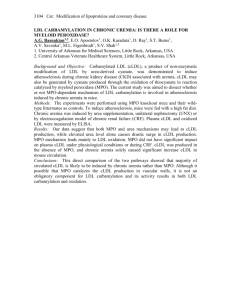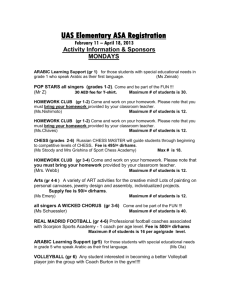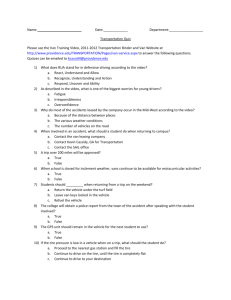MGT 3003 – Project 1 Case Study: The Moroccan Post Office and
advertisement
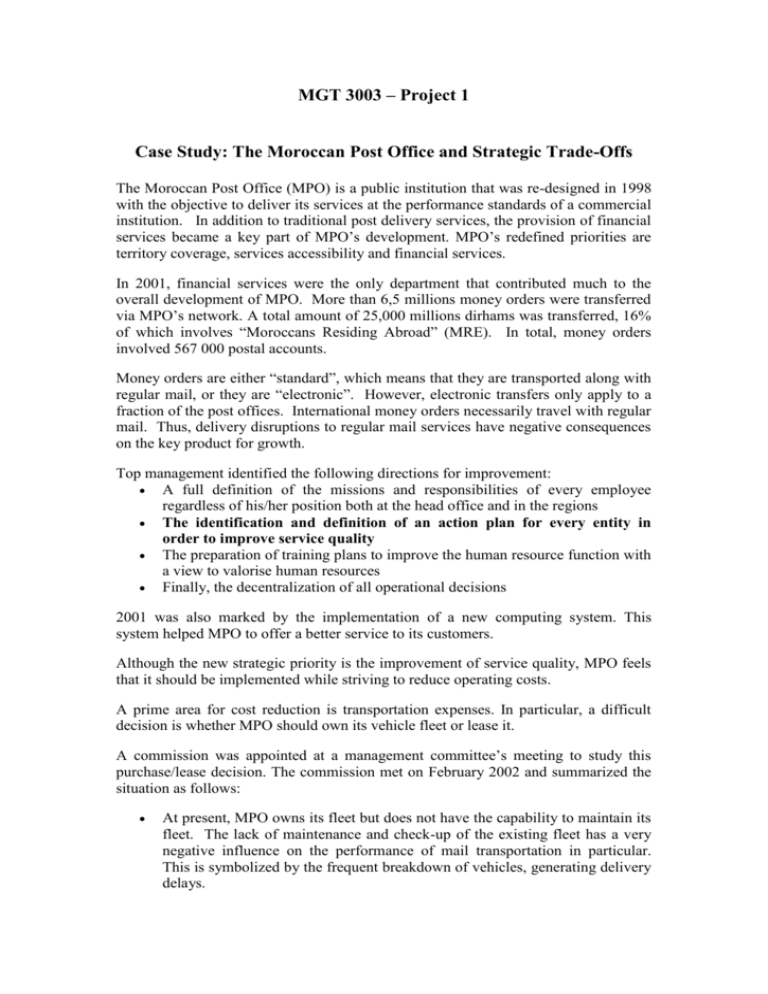
MGT 3003 – Project 1 Case Study: The Moroccan Post Office and Strategic Trade-Offs The Moroccan Post Office (MPO) is a public institution that was re-designed in 1998 with the objective to deliver its services at the performance standards of a commercial institution. In addition to traditional post delivery services, the provision of financial services became a key part of MPO’s development. MPO’s redefined priorities are territory coverage, services accessibility and financial services. In 2001, financial services were the only department that contributed much to the overall development of MPO. More than 6,5 millions money orders were transferred via MPO’s network. A total amount of 25,000 millions dirhams was transferred, 16% of which involves “Moroccans Residing Abroad” (MRE). In total, money orders involved 567 000 postal accounts. Money orders are either “standard”, which means that they are transported along with regular mail, or they are “electronic”. However, electronic transfers only apply to a fraction of the post offices. International money orders necessarily travel with regular mail. Thus, delivery disruptions to regular mail services have negative consequences on the key product for growth. Top management identified the following directions for improvement: A full definition of the missions and responsibilities of every employee regardless of his/her position both at the head office and in the regions The identification and definition of an action plan for every entity in order to improve service quality The preparation of training plans to improve the human resource function with a view to valorise human resources Finally, the decentralization of all operational decisions 2001 was also marked by the implementation of a new computing system. This system helped MPO to offer a better service to its customers. Although the new strategic priority is the improvement of service quality, MPO feels that it should be implemented while striving to reduce operating costs. A prime area for cost reduction is transportation expenses. In particular, a difficult decision is whether MPO should own its vehicle fleet or lease it. A commission was appointed at a management committee’s meeting to study this purchase/lease decision. The commission met on February 2002 and summarized the situation as follows: At present, MPO owns its fleet but does not have the capability to maintain its fleet. The lack of maintenance and check-up of the existing fleet has a very negative influence on the performance of mail transportation in particular. This is symbolized by the frequent breakdown of vehicles, generating delivery delays. Historically, MPO has always owned its fleet of vehicles. This is easily explained by the fact that commercial leases of vehicles have only be a recent service offering. Should the purchase option be chosen, it is essential to integrate the maintenance staff expenses in order to guarantee a decent level of service quality. It is estimated that staff employed for maintenance would cost 1500 dirhams per year per vehicle. It is unlikely that MPO would manage to run a fully effective maintenance force in its first year, and thus, disruption to delivery should be expected, even when taking into account the cost of maintenance staff. A crucial distinction has to be made between the use of vehicles intra-city and inter-cities. Intra-city travel means that a vehicle is driven 20,000 km per year. Inter-city vehicle are driven 90,000 km per year. Maintenance costs in terms of tooling/parts and other non-staff expenses are estimated to be 5,000 dirhams for a light van driven intra-city and 8,000 dirhams for a light van driven inter-cities. These costs should be adjusted 25% up for full size vans. The accounting depreciation rules are that a light van is depreciated fully with no salvage value after 150,000 km whereas a full size van is depreciated fully after 200,000 km. The lease costs are 46,460 dirhams for a light van per year and 86,952 dirhams for a full size van per year, provided that the vehicles are not driven for more than 30,000 km. Excess charges apply above 30,000 km and are 0.48dh/km for a light van and 0.78 dh/km for a full size van. The lease contract specifies that these rates are fully inclusive of all maintenance (labour and parts). A light van (e.g., Renault Express) costs 120,000 dirhams. A full size van (e.g., Citroen Jumper) costs 240,000 dirhams. Yearly insurance costs if acquiring the vehicle are 3,000 dirhams and 4,500 dirhams for light and full size vans respectively. As MPO is considering entering an operating lease, insurance costs would be the responsibility of the leasing company. Road tax is 700 dirhams and 1500 dirhams annually for a light and full size van. Operating leases charges include road tax. Questions: 1. Compute the cost per year of owning/leasing the two types of vehicles for each types of use (intra-city vs. inter-cities). 2. Comment the results. Which option (own/lease) seems more attractive? 3. In the context of the strategy to improve service quality, make any assumptions necessary (e.g. % of intra/inter city travel, fleet composition, definition of service level) and develop a decision framework that would contrast cost data with service level data and would help MPO to make a decision.
